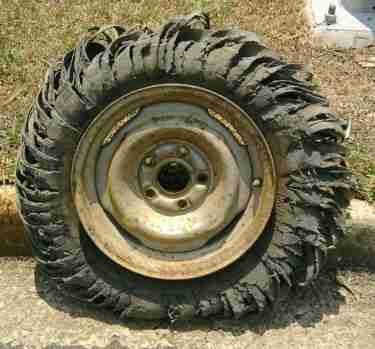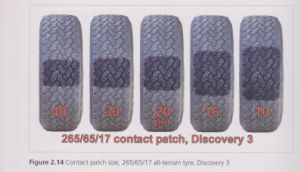

Tyre Pressure for your 4X4 Vehicle
On-Road Tyre Pressure
When driving on sealed roads, you should follow the recommended tyre pressures as stated on your vehicle’s tyre placard, this is found on the drivers side door entry. For many 4×4 wagons and utes, will be between 28psi and 38psi, however check the tyre placard to be certain. The tyre placard will usually state different pressure recommendations dependent on the tyre size and the load carrying capacity. For example, utes that are not carrying a load run a lower tyre pressure, when the ute is loaded with 600kg in the tray the tyre pressure is higher.
Rough Gravel Roads
Somewhere in the range of 26psi to 32psi is usually about right for rough gravel. If you were running 38psi on the sealed road, then drop pressures to 28psi on rough gravel and see how it feels. If you were running 30psi on the road then 26psi might be appropriate on rough gravel roads and tracks. Lowering your tyre pressures in these conditions will not only improve your vehicle’s ride quality, but also improve tyre flexibility, which can reduce the risk of flat tyres or blow outs. However, you cannot exceed 80km/hr with lower tyre pressure.
Rocky Terrain
So how low should you go? If you’ve engaged low range to tackle rocky terrain and you’re driving at slow speeds, you can reduce your tyre pressures to as low as 20psi, but care has to be taken when driving at these pressures. It’s important to maintain controlled throttle and steering movements when driving with low tyre pressures to avert the risk of the tyres slipping on their rims, which could result in deflation or a tyre coming off the rim altogether. Do not drive over 40km/hr because excessive speed will generate too much heat, which can damage the tyres. If conditions improve and your speed picks up, inflate the tyres to around 28psi. Next 4WD Course
Mud or Bogged Vehicle
When the mud seems bottomless and you are bogged tyre pressure as low as 15psi will give your tyres a better chance of gaining purchase thanks to a longer tyre footprint. Lowering air pressure increases the tyre’s footprint, which in the case of mud & sand gives the tyre a bigger footprint so you get more traction. Once again, when you have a very low tyre pressure you cannot exceed 6km/hr. Dropping tyres to 15psi is only used to get out of the bog.

Sand Driving
Lowering air pressure increases the tyre’s footprint, which in the case of sand helps it to float over the surface rather than dig into it. If the sand is particularly soft, which is usually the case if its fine and dry, you can drop your tyres down to as low as 20psi without fear of pealing one off a rim, so long as you don’t drive too fast and you don’t make any sudden steering movements. See video below, car pushes through sand with low tyre pressure.
The Final Word
All of the air pressure recommendations listed here should be used only as a general guide, as there are many variables such as track conditions, vehicle weights, tyre sizes and more. Whenever you lower your tyre pressures for off-road driving, remember that they will generate more heat, so speed and steering inputs have to be adjusted accordingly, in other words go slow. 4WD course in Darwin
Finally, don’t forget to reinflate your tyres to the vehicles placard recommended pressures once you’re back on the sealed road and while you’re at it have a good look over each tyre to check for signs of damage, and repair or replace if necessary. Also check the valve stems for leaks and make sure the dust caps are in place.
James Gorrie has been driving 4X4 vehicles in the remote parts of the Northern Territory for over twenty years.